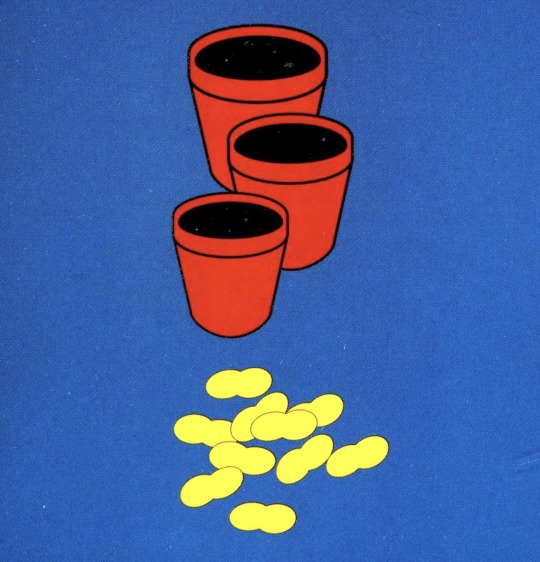#Coins
Text

Roman silver coin minted in 55 BCE, during Julius Caesar's campaigns in Gaul, by Publius Fonteius Capito, one of the tresviri monetales (mint officials) for that year. On the obverse, the helmeted head of the war god Mars, with a small representation of a tropaeum (trophy) behind him. On the reverse, a Roman horseman rides down two enemy soldiers, identified by their helmets and shields as Gauls.
#classics#tagamemnon#history#ancient history#Ancient Rome#Roman Republic#Roman history#art#art history#ancient art#Roman art#Ancient Roman art#Roman Republican art#artifacts#artefacts#coins#ancient coins#Roman coins#Ancient Roman coins#numismatics#ancient numismatics#Roman numismatics
80 notes
·
View notes
Text

Queen of Coins. Art by Alejandro R. Rozán, from The Medieval Feathers Tarot.
28 notes
·
View notes
Text
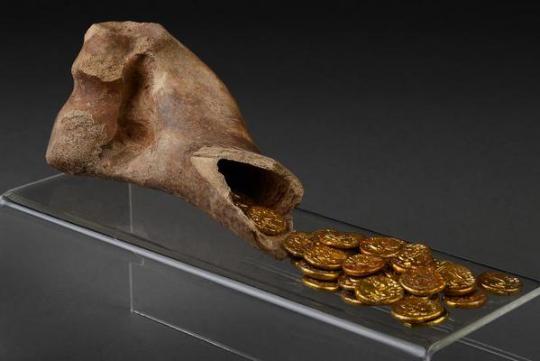
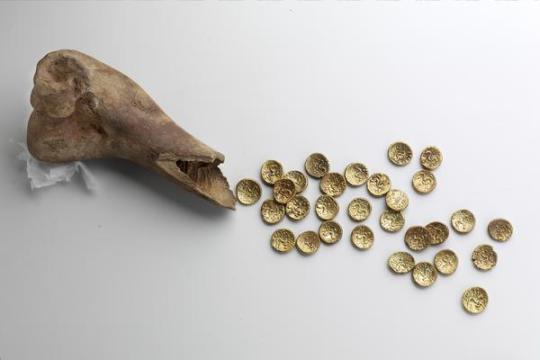
A hoard of Celtic gold coins hidden in a cow bone, discovered near Sedgewick, England, 1st century AD
from The Norfolk Museums Collections
3K notes
·
View notes
Photo

Where Roman coins have been found
4K notes
·
View notes
Text
Fun fact that, in Denmark, the National Museum has put together a reference collection of LARP (Live Action Role Playing) coins, because archaeologists started finding them in digs and got really confused!
One campaign, Legendernes Verden (World of Legends), minted 10.000 of their tin coins for a one-week LARP, and since they, and most other home-minted LARP coinage, use old Danish coinage terms on their creations, the confusion is both understandable and hilariously complete.
Here's an example:
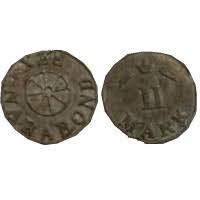
Those in the know would immediately recognise the inscription "Narabond" as a location withing the fictional Danish LARP world 'Niraham'. Those not in the know would be endlessly puzzled, as it looks perfectly reasonable for, for example, a medieval coin.
3K notes
·
View notes
Text

Ancient coins depicting the labyrinth from Knossos, Crete. Greek myths said that the rulers of Knossos built a labyrinth, at the center of which was a formidable minotaur. The stories tell of an Athenian hero, Theseus, who braved the maze and took on the monster.
{WHF} {Ko-Fi} {Medium}
3K notes
·
View notes
Text


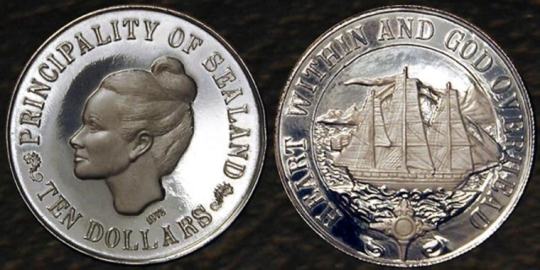
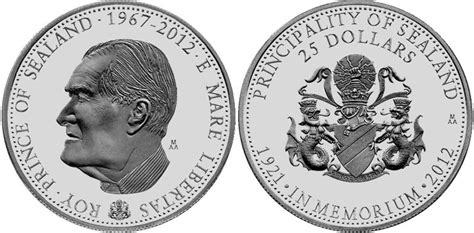

and they're ocean-themed ?!
#Oh my god?!#full ass micronation with coins?!#hetalia#my posts#historical hetalia#coins#i dont even need to know about the coins for the story lol i just came across it when reading about the country's age#aph sealand
267 notes
·
View notes
Photo

After listening to the Kill Every Monster episode about mimics, the idea of adorable baby mimics as coins kept bouncing around in my head and I had to doodle it.
1K notes
·
View notes
Text

Some possible coins for my headworld. I'm still playing with whether or not I want a standard currency. There might be many crops with their own coin (some more dependable than others).
I like that saffron looks like a handful of corn.
266 notes
·
View notes
Text
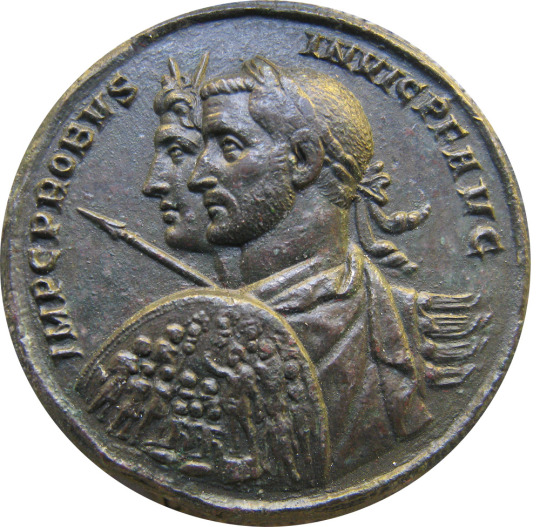
Coin minted ca. 280 CE by the Roman emperor Marcus Aurelius Probus (r. 276-282). Probus is shown in the company of Sol Invictus ("Unconquered Sun"), a late form of the solar deity whose worship had been promoted by Probus' predecessor Aurelian. The birthday of Sol Invictus (Dies Natalis Solis Invicti) was traditionally celebrated on Dec. 25. On this coin, Probus, who was constantly on campaign during his brief reign, is shown prepared for battle with shield and spear, alongside Sol Invictus, who wears his characteristic radiant crown. Now in the National Museum of Denmark, Copenhagen. Photo credit: ChrisO/Wikimedia Commons.
#classics#tagamemnon#Ancient Rome#Roman Empire#ancient history#Roman history#Probus#M. Aurelius Probus#Roman religion#Ancient Roman religion#religio Romana#Sol Invictus#art#art history#ancient art#Roman art#Ancient Roman art#Roman Imperial art#coins#ancient coins#Roman coins#Ancient Roman coins#numismatics#ancient numismatics#Roman numismatics#National Museum of Denmark
306 notes
·
View notes
Text
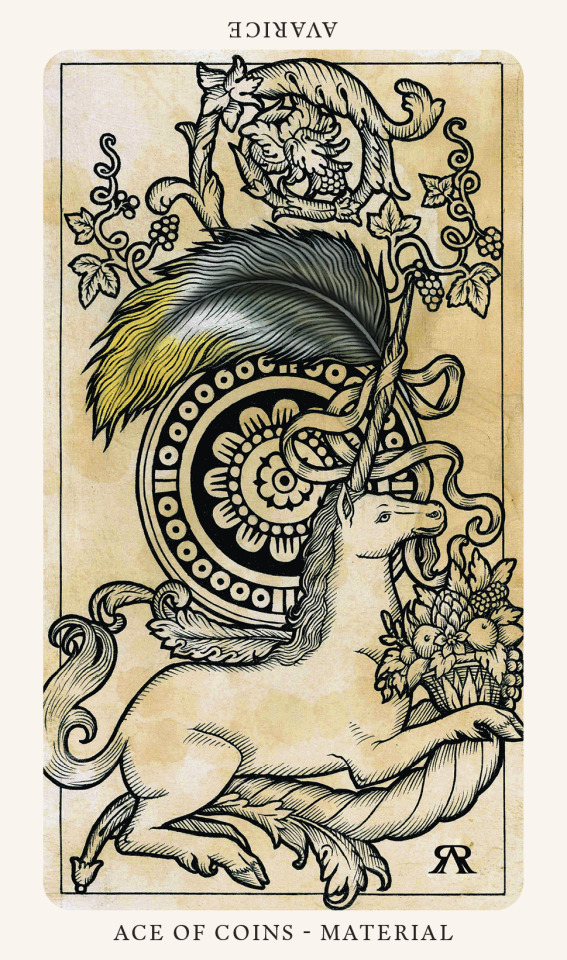
Ace of Coins. Art by Alejandro R. Rozán, from The Medieval Feathers Tarot.
#Alejandro R. Rozán#The Medieval Feathers Tarot#Ace of Coins#Ace#Coins#Minor Arcana#Tarot#Folklore#Unicorn
20 notes
·
View notes
Text

A Tale of Two Coins - 2000 years apart!
On the right is a Judea Capta coin from 71 AD, 1952 years ago. The coin says “Judea conquered" in latin. These were commemorative coins originally issued by the Roman Emperor Vespasian to commemorate the capture of Judea and the destruction of the Jewish Second Temple by his son Titus in 70 CE during the First Jewish Revolt. On one side of the palm tree is a weeping defeated Jewish woman. On the other a victorious Roman soldier.
On the left, we see the same palm tree representing the Jewish homeland, but instead of a Roman soldier, there is a Jewish woman holding a baby up to the heavens symbolizing the rebirth of the Jewish people like a phoenix out of the ashes. In place of the weeping woman is a Jewish farmer (her husband) planting new roots for the Jewish people in the Jewish homeland. Instead of “Judea Capta'' the words read - “Israel Liberated 1948″.
These two coins sum up the history of exile and return of the indigenous Jews to the Kingdom of Israel.
In the prophetic words of the Bible: “They who sow in tears shall reap in joy.” (Psalm 126)
#secular-jew#israel#jewish#judaism#israeli#jerusalem#diaspora#secular jew#secularjew#islam#coins#ancient coins#judean coinage#judea#samaria#romans#judea capta#vespasian#titus#emperor#roman empire#Israel liberated#1948#hamas#coinage#second temple#1st century#palestine#Palestinian#gaza
367 notes
·
View notes
Text
How have I gone all this time with no one telling me about the Italian slave girl who became the first queen regnant of Parthia, poisoned her former owner/husband, survived being overthrown and comfortably retired in Rome?

Her name is Musa and I need a movie about her now.
173 notes
·
View notes
Text

The Kimbolton coin hoard, a collection of 68 Celtic coins made from a gold-copper-silver alloy. Uncovered by a metal detectorist near Kimbolton, England in 2010. Dates to around 100 BC - 40 AD.
from The St. Neots Museum
805 notes
·
View notes
Text
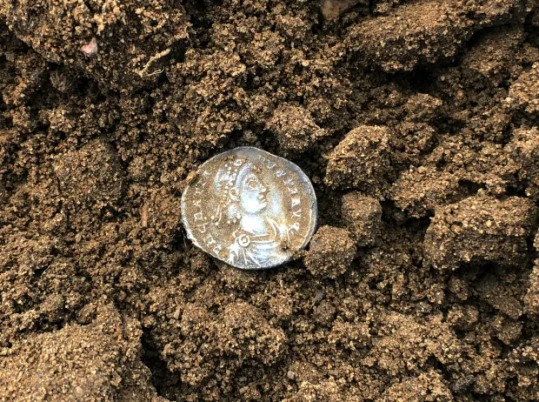
Roman Coin Hoard Found in England Sells at Auction
A hoard of Roman coins discovered by a metal detectorist scouring farmland has fetched more than £15,000 after going under the hammer.
More than 430 coins were found buried in the village of Colkirk, near Fakenham, Norfolk.
A collection of 73 pieces, including an extremely rare coin featuring a phoenix on a globe, was auctioned in London.
The anonymous finder had shown "perseverance", said coin specialist Nigel Mills, from Noonans auctioneers.
"Some of the people I've spoken to recently, who have found some amazing finds, are spending a lot of time detecting - hours and hours - and they don't give up," he said.

"They keep going and that's the secret in so many things - don't give up, keep looking."
The Colkirk hoard, believed to date back to the early 5th Century, was spread out across a third of an acre on arable farmland, although the majority of finds were discovered in a 1.5m (59in) radius.
It was a lucky find for the detectorist, who had no idea the soil held such treasures.
They were out searching a field in January 2020 when they spotted a silver coin, which they recognised as a siliqua - a small, thin Roman coin.
It sparked a haul of 40 coins that day, with a further 40 found on the following one.
Covid lockdowns meant searches became more sporadic, but each discovery was logged with a portable GPS unit to accurately pinpoint the hoard's distribution.
In all, 315 coins were found in 2020, 114 in 2021 and three in 2022.
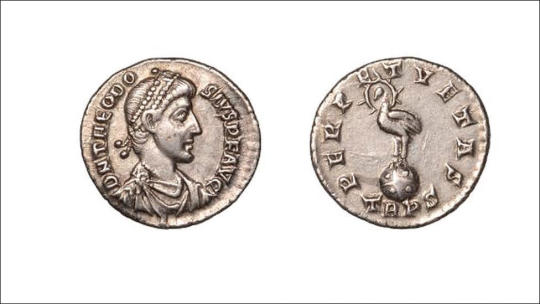
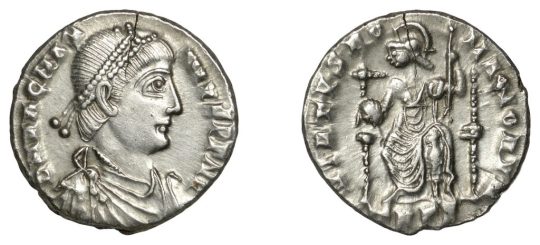
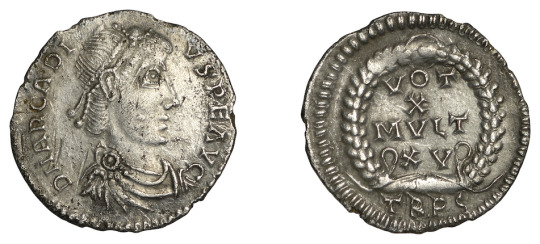
Some of the coins had been damaged, while others were fragmented due to farming processes.
A commemorative Third Miliarensis coin issued by Emperor Theodosius, decorated with a phoenix on one side, was only the fifth one of its type known to exist, with all the others in museums.
It reached £3,400 at the sale in Mayfair.
Mr Mills said: "The hoard had [been] spread out over a third of an acre through disturbance by ploughing and has been recorded under the Treasure Act.
"The hoard is likely to have been deposited at the beginning of the 5th Century AD, with the latest coin of Honorius dating no later than 402 AD.
"Other Roman treasure finds of gold and silver also from East Anglia, such as the Hoxne and Thetford hoards, reflect the wealth and importance of the area."

#Roman Coin Hoard Found in England Sells at Auction#village of Colkirk#metal detecting#coins#collectable coins#roman coins#ancient coins#ancient artifacts#archeology#archeolgst#history#history news#ancient history#ancient culture#ancient civilizations#roman history#roman empire#roman art
195 notes
·
View notes
